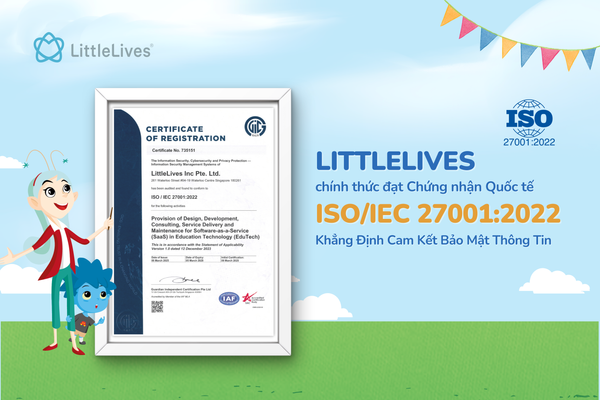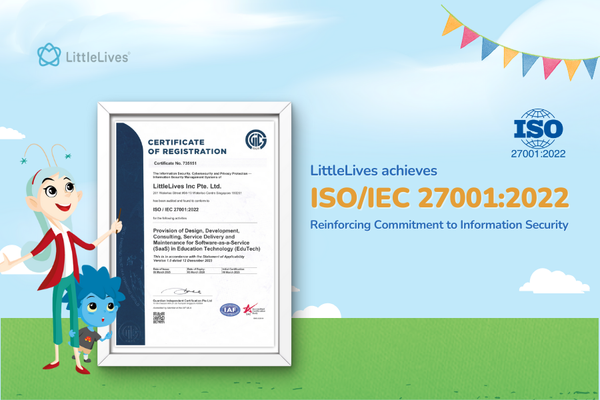Easy Ways to Develop Leadership Skills in Your Child (Tips From Teachers)
You often read about developing leadership skills for workplace success but not so much when it comes to early childhood development. Preschools heavily promote other foundational skills, such as early literacy, motor skills, and social and emotional support, but only a handful focus on leadership.

No child is born a leader. Although there is some debate on whether some are born with such innate qualities, it is important for us, as adults, to help children develop leadership skills at a young age. Scrape the mindset that children are too young for this or children are too young to understand. The earlier we can instill leadership skills in children, the sooner it becomes second nature, just like learning to read or riding a bike.
Want your child to be able to participate in new experiences with confidence, communicate effectively, work collaboratively with others, take personal responsibility and solve problems creatively? (Note: These are vital qualities that will empower children to lead their own learning and contribute positively to academic results.)

How to Cultivate Leadership Skills in Kids
Read on for some easy ways to cultivate the leadership skills children need to thrive in the 21st century:
1. Teaching Confidence
(Self-confidence is necessary for leaders to take risks and accomplish goals.)
- Allow children to “fall” and tell them to never give up. Help children understand that everyone makes mistakes and it’s important not to let the setbacks get in the way but learn from such experiences instead. Another relevant point is to let them know that perfection is unrealistic (especially with all the filters used in social media today).
- Observe your child’s interests and encourage them to try new things, e.g. by exposing them to a variety of enrichment classes. Once they pick up new skills, they will feel capable and it’s a boost in their self-esteem. Then they won’t be afraid to tackle any challenges that come their way.
- Praise their efforts regardless of outcome, even if it’s something small like overcoming the “challenge” of sorting the right shapes in a matching game.

2. Teaching Communication Skills
Leaders have to communicate his vision and goals to his team so as to motivate them to achieve them.)
- Create an environment at home that promotes communication. Try to talk to your child regularly, ask them for their opinions and start fun conversations with your child, such as “My hair is looking rather long. Do you think I should go to the hairdressers or attempt to cut my own hair?!”
- It’s important to model important conversation skills when talking to your child and that includes listening to the other person and not talking over the other person. Also, point out nonverbal body language, e.g. when someone rolls their eyes at the person he is talking to, it’s rude.
- Control children’s screen time. A study published in the Computers in Human Behaviour journal showed that increased screen time may affect children’s ability to interpret people’s emotional and social cues.

3. Teaching Teamwork
(Leadership and teamwork have a direct impact on the ability to carry out a mission and achieve goals.)
- Sign your child up for team-based activities, such as sports or holiday camps. Besides being fun, they learn to build social bonds with their teammates while competing with competitors. It focuses on the unity of the team to progress towards a goal – this can bring a child far in life rather than being an isolated individual “star”.
- If your child is rather shy or introverted, you can try simple family activities (even if there’s only three of you), like painting a picture, solving a puzzle or playing board games together.

4. Teaching Emotional Self-Regulation
(A good leader needs to have the ability to manage his emotions and behaviour in accordance with the demands of the situation.)
- Teach kids words for their emotions, e.g. angry, happy, sad, and encourage them to talk about how they are feeling.
- When they throw tantrums or misbehave, resist the urge to yell or punish. Instead, guide their behaviour by discussing about it (so kids won’t repress those emotions and become an explosive volcano down the road) and coaching their actions (so they won’t repeat them in the future). Giving them some quiet time to self-reflect also helps.
Children with ADHD may find it difficult to manage their emotions. If you are concerned that your child might have ADHD, schedule a screening appointment with your nearest special education centre.
5. Teaching Creative Problem-Solving
(Leaders with creative problem-solving skills can continuously feed future organisational growth and success, and inspire others along the way.)
- Start triggering their curiosity in day-to-day life by asking lots of questions like “Why are there waves in the ocean but not in ponds?” or “Why is the sky blue?”. This enhances their imaginative skills leading to better problem-solving abilities.
- When problems arise, walk them through the steps to problem-solve: 1. What’s the problem?; 2. What would happen if I… or…?; 3. Which solution should I try?; 4. Try it out.
- Just like how you would boost a child’s confidence, make them understand that failure is part of the path to success, and offer encouragement and praise for effort, progress and persistence.
This article was first published on Kiddy123.com.






